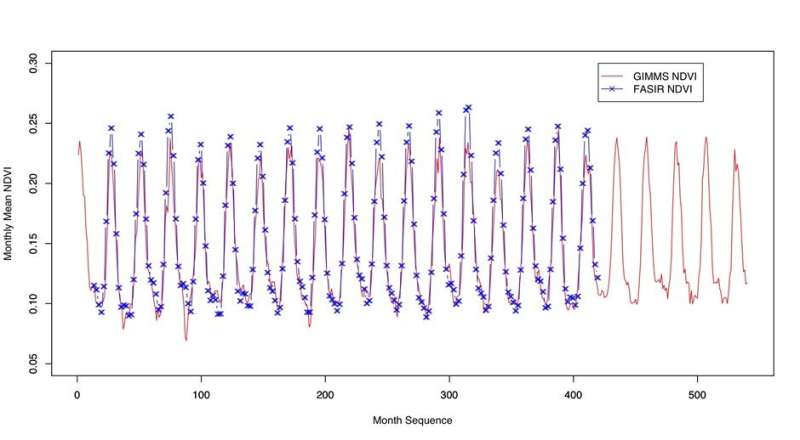In a recent study, a research team from Chung-Ang University, Korea presents open research questions related to anomaly detection using deep learning and curates open-access time series datasets, an invaluable asset for selecting the appropriate technique for a particular scientific or industrial problem and developing efficient anomaly detection techniques. Credit: Information Fusion (2022). DOI: 10.1016/j.inffus.2022.10.008
Monitoring financial security, industrial safety, medical conditions, climate, and pollution require analysis of large volumes of time series data. A crucial step in this analysis involves identification of unusual points, patterns, or events that deviate from a dataset. This is known as "anomaly detection" and is performed using data mining techniques.
Although deep learning methods have been extensively applied in anomaly detection, there is no one-size-fits-all technique that works for multiple applications across a variety of fields. Further, existing studies on anomaly detection for multivariate time series focus solely on the approach without examining its challenges.
A group of researchers from Chung-Ang University in Korea have now addressed this gap by summarizing the applications based on anomaly detection. The team, including Professor Jason J. Jung and Dr. Gen Li, evaluated the current state-of-the-art anomaly detection techniques and addressed the challenges associated with them.
Their work was made available in Information Fusion.
"Our fundamental research topic is anomaly detection in multivariate time series. In this review, we have summarized the approaches, challenges, and applications for the same," explains Prof. Jung. The researcher duo has worked extensively on time series anomaly detection for multiple variables and has previously published their works on seizure detection, climate monitoring and financial fraud monitoring that culminated in this review.
The team first classified the anomalies into three types, namely abnormal time points, time intervals, and time series. Next, they highlighted that, among the deep learning-based artificial neural networks, long short-term memory (LSTM) and autoencoders are most commonly used for detecting abnormal time points and time intervals.
Additionally, they discussed alternative methods such as dynamic graphs that examine relational features between the time series and detect abnormal time intervals. An in-depth summary of the current limitations of the prevalent techniques emphasizing the root cause of anomalies was also provided.
Finally, the duo presented a thorough overview of the applications for anomaly detection in multivariate time series. They curated open-access time series datasets and also discussed the open research questions and challenges related to anomaly detection in multivariate time series.
The potential of deep learning-based approaches for anomaly detection is far-reaching, as Prof. Jung surmises, "I believe that this review will help researchers find the appropriate approach for detecting anomalies in their respective areas of work. For example, in the field of science, people can easily find out the open access datasets and the corresponding state-of-art anomaly detection method in this paper. For industrial applications, the appropriate anomaly detection techniques to identify damages and faults could be conveniently found in this review".
As for the challenges involved, developing a model for explaining the anomalies detected is of considerable worth since it can help us understand why the anomaly occurred in the first place. "The challenge is to identify the relationship between an abnormal time point and the time point leading to that anomaly," says Prof. Jung.
Taken together, this review is an invaluable resource for selecting appropriate anomaly detection techniques for various fields, as well as for developing more efficient anomaly detection techniques.
More information: Gen Li et al, Deep learning for anomaly detection in multivariate time series: Approaches, applications, and challenges, Information Fusion (2022). DOI: 10.1016/j.inffus.2022.10.008
Provided by Chung Ang University
























